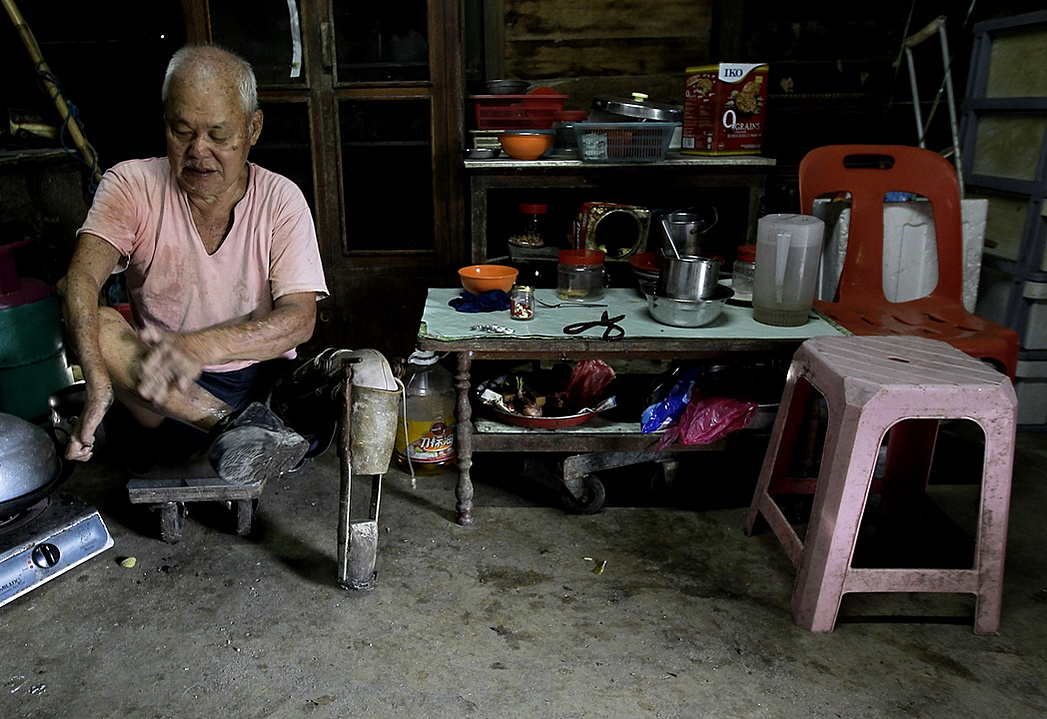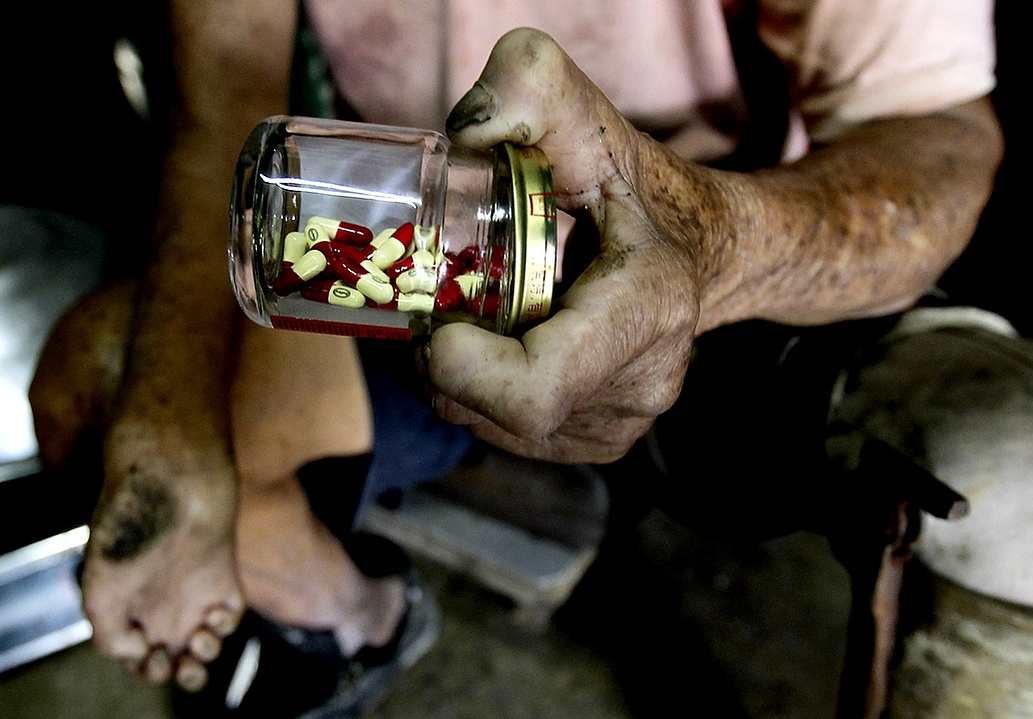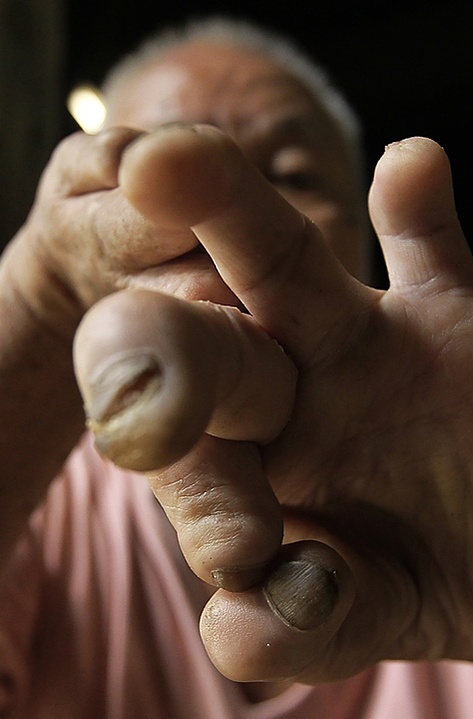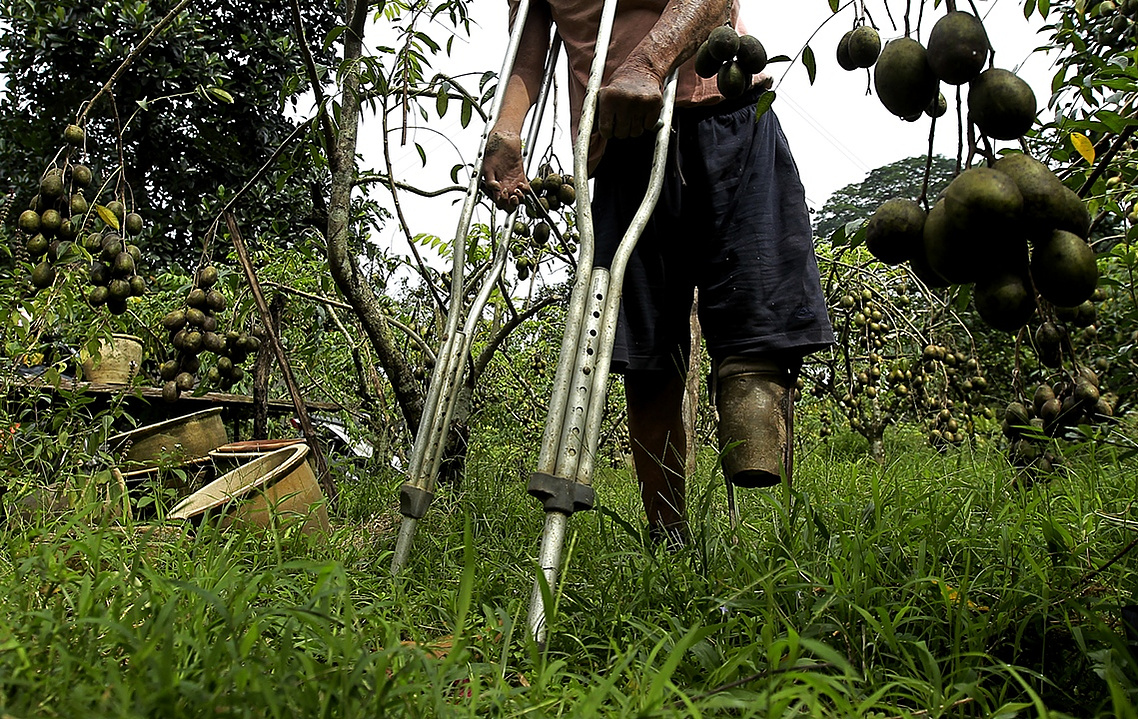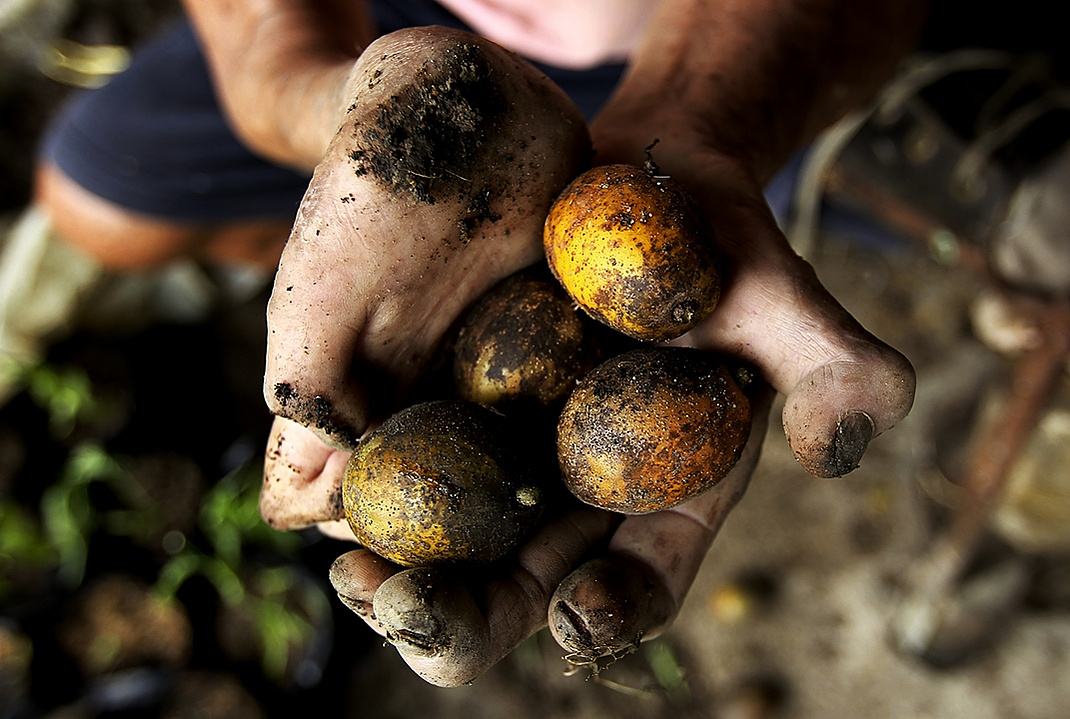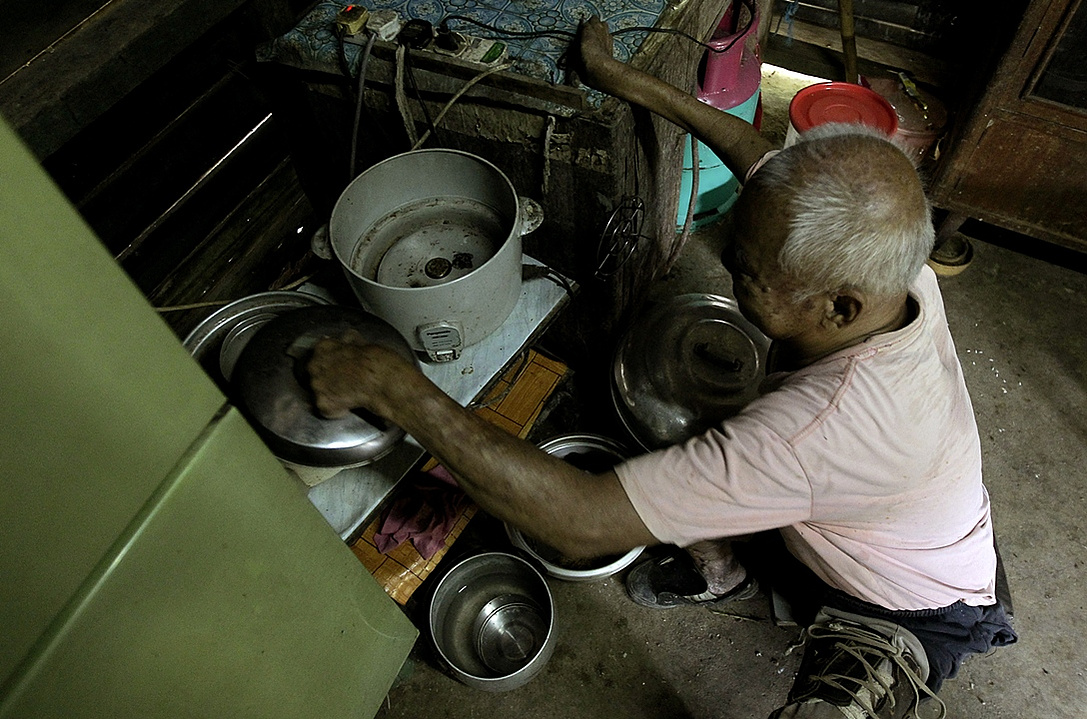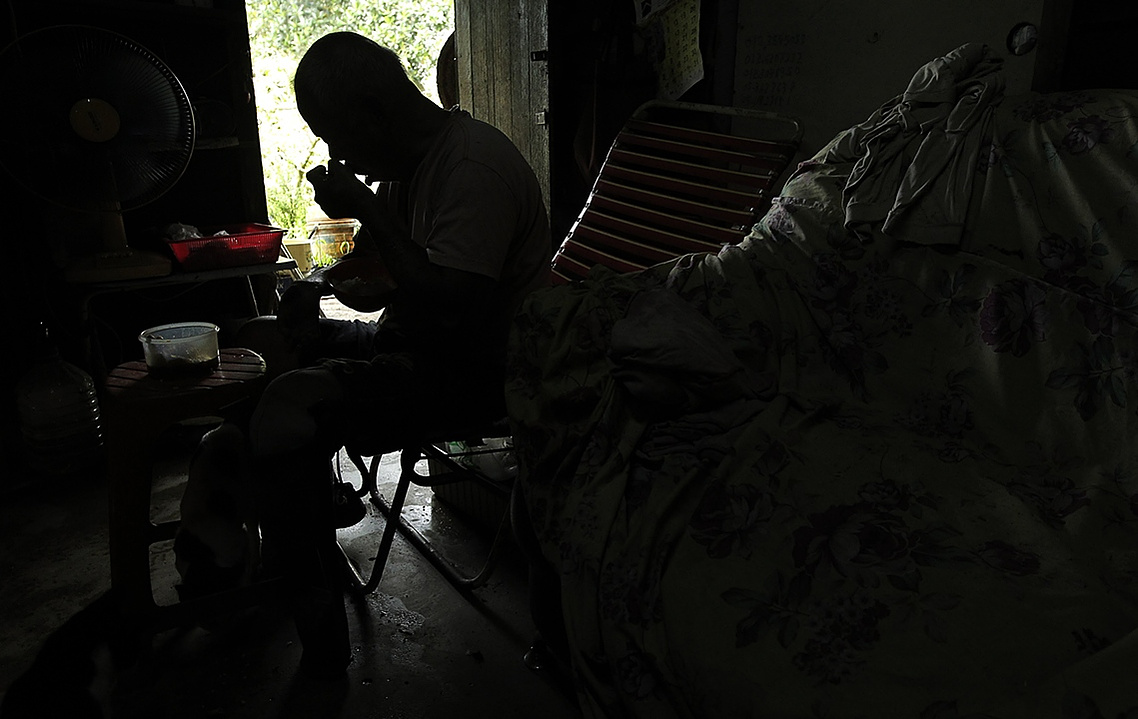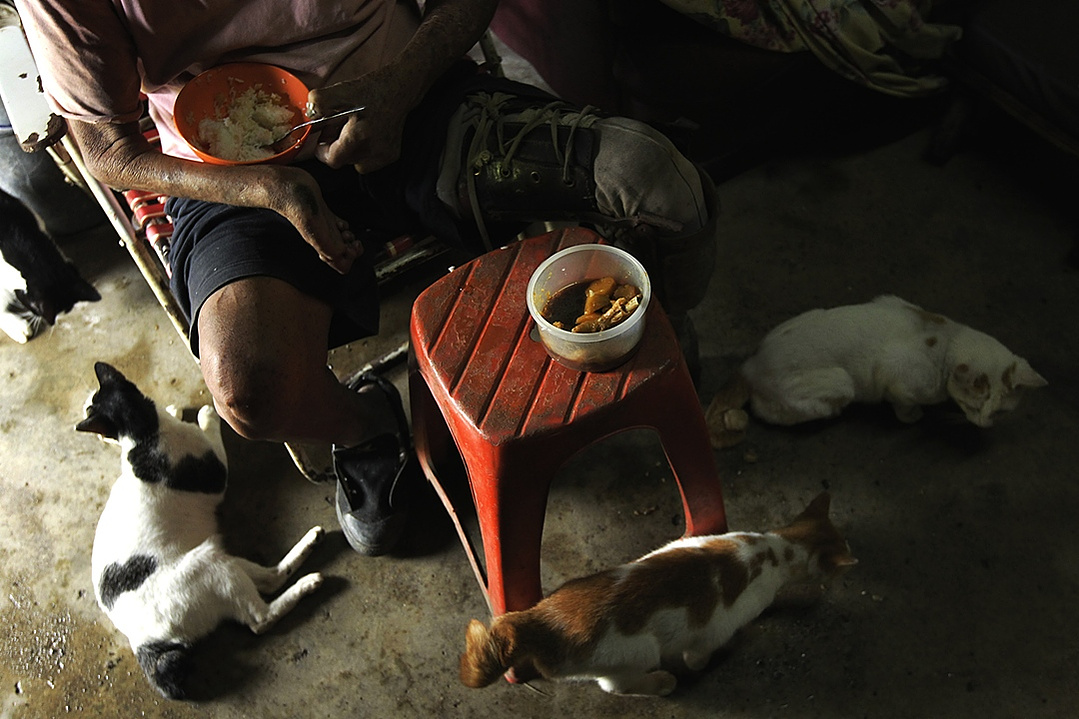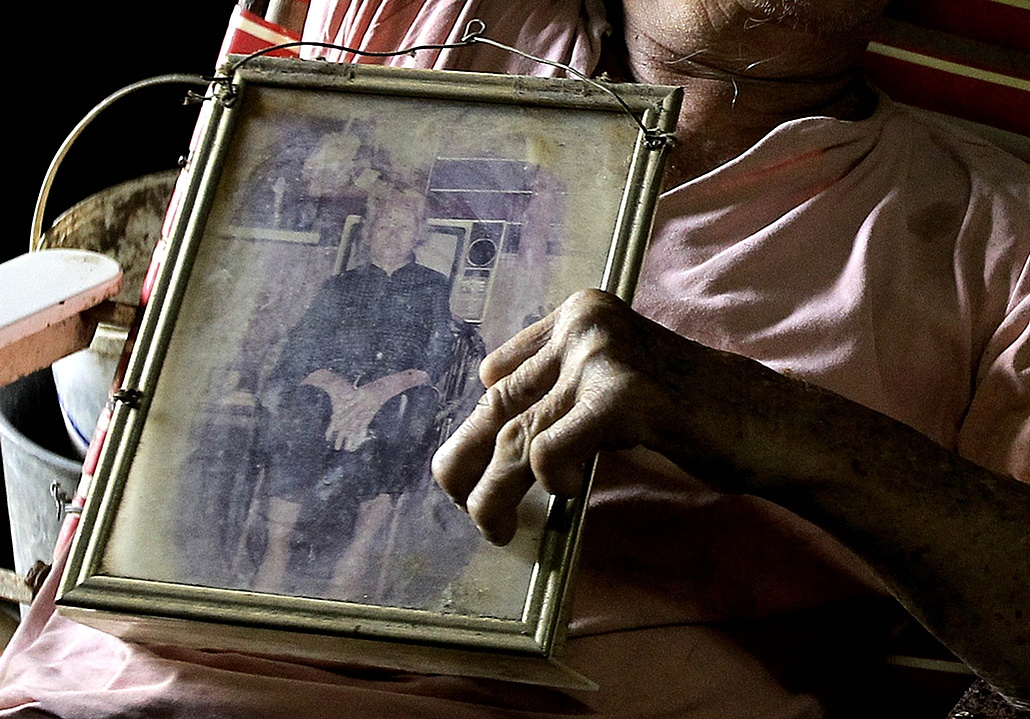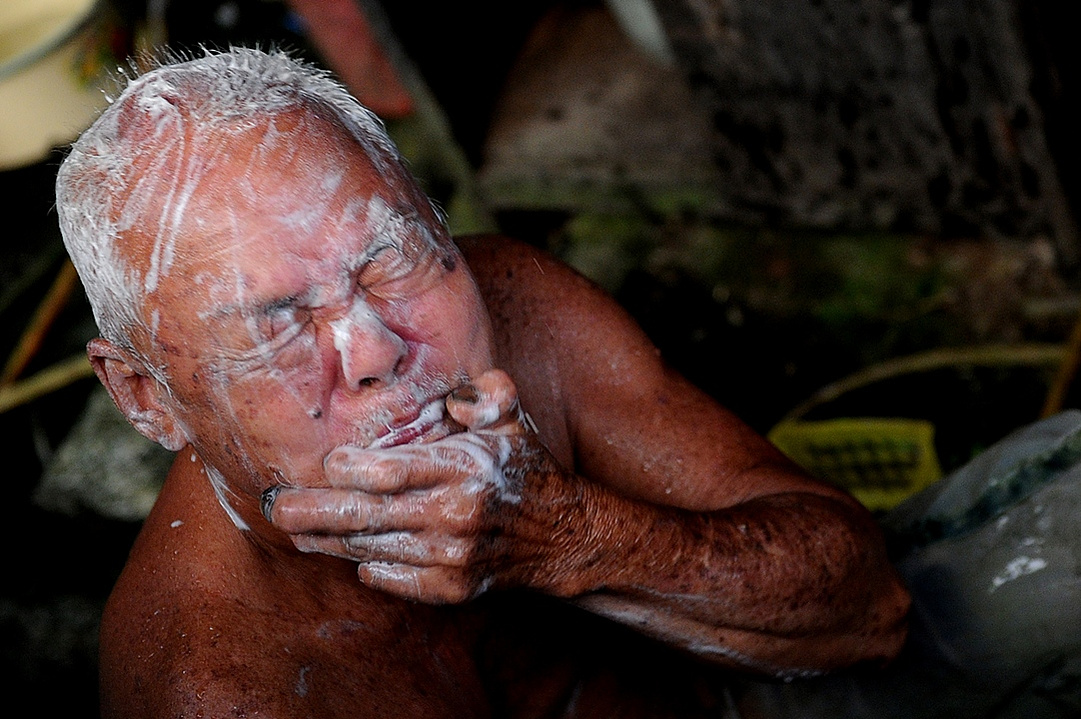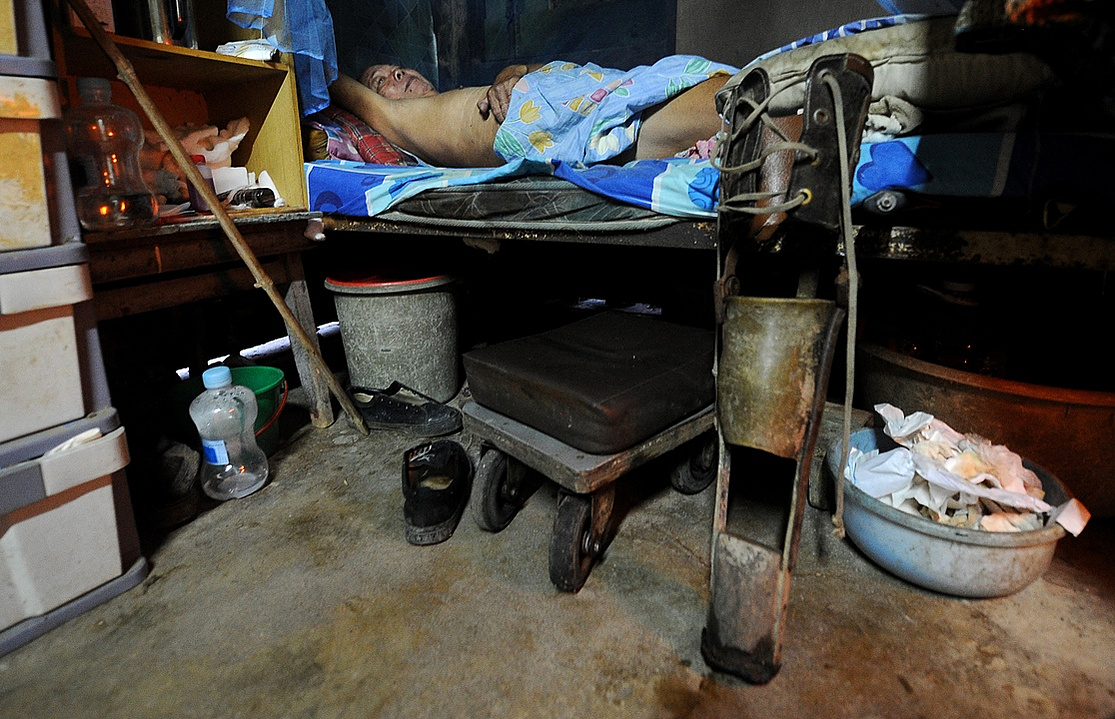For most of his life, Ah Tong, 75, has called the Sungai Buloh leprosy colony his home. He has only vague recollections of Ipoh — where he was born. Infected by the Mycobacterium leprae bacteria in his early 20s, Ah Tong became an outcast in a community that believed that his disease was the result of a curse.
He was shunned in his hometown and disallowed from going near the village well. Instead, Ah Tong bathed with water from a ditch which he said “reeked of the stench of dead cats and chicken carcasses”.
In the 1950s, Ah Tong made “The Valley of Hope” his new home.
Half a century later, he is still there — tending to his golden apple (buah kedondong) trees, while propped up with a crutch in one hand.
He walks about on one leg and picks the fruits up with gnarled hands — painful reminders of the terrifying disease that destroyed numerous lives before a cocktail of drugs was developed to eradicate it once and for all.
The drugs — rifampicin, dapsone and clofazimine — reduced incidences from 5.7 per 10,000 in 1983 to 0.32 per 10,000 in 2005.
There are now about 200 residents left in the centre — a far cry from the 2,400 patients housed there in 1959.
Aged and living the remainder of their lives tilling the land, they are the last members of the colony of lepers.

